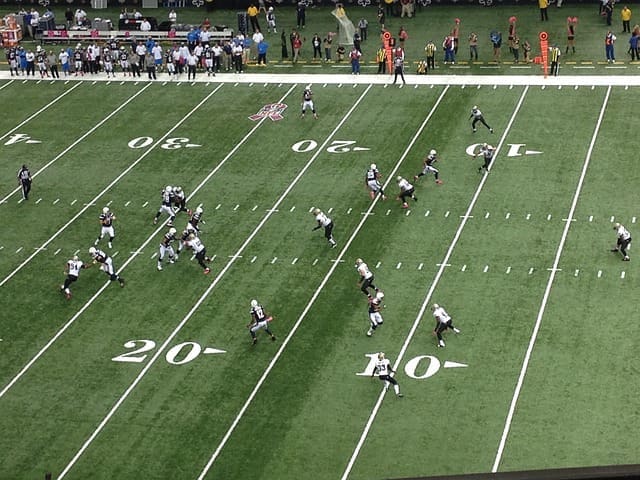While the NFL is the professional side of football, college football is where aspiring football players play to get noticed by agents and be invited to play in the NFL. For most people, college football is a stepping stone to the big leagues, and while it’s mostly true, college football is no small thing, as its seasons are just as anticipated by football fans.
One can say that college football is just as popular as the NFL. But what are the differences between the NFL and college football? Let’s find out.
Stadiums
The fanbase of college football is just as significant as its NFL counterpart. In fact, in some places in the US, college football is more prevalent in the NFL. One can assume why most college football stadiums are much bigger than NFL stadiums. Some NCAA stadiums can accommodate over 100,000 people, like the ones in Ohio, Texas, Alabama, etc.
The only stadium with the same capacity as college football stadiums, the NFL is the MetLife Stadium, which commonly holds the games for the New York Jets and the New York Giants. It’s the most significant NFL stadium that can hold over 82,000 people.
Number of Teams
The number of teams in college football is the same with the schools, academies, and universities participating in college football. And so, college football has 130 teams all in all. These teams are split into different conferences, and one can say that there are dozens of teams playing on a single day of a season.
On the other hand, the NFL has only 32 teams, divided evenly into eight divisions. This difference in number usually is the basis of the predictions made for the postseason. This is especially important for bettors, making the NFL much easier to predict the outcome of compared to college football tournament odds like National Championship odds.
Number of Players
In the NFL, each team has 53 players, and 46 must be active each Sunday. College football, on the other hand, can have more and sometimes can even stretch to triple digits. It’s safe to assume that college football usually prefers quantity or quality as most players are also studying, making them more prone to miss practices and games. The NFL is professional, so they prefer quality over quantity, constantly practicing their players for their upcoming games.
Jersey Numbers
In the NFL, jersey numbers mean something. For example, players in their 20s, 30s, and 40s are running backs and defensive backs. Those in their teens and 80s are usually wide receivers. This allows the coaches to see what’s happening on the field and create clearer callouts and decisions. This also leaves them more time strategizing as it’s easier to identify their players.
On the other hand, the jersey numbers in college football don’t usually mean anything other than personal preference. A player in any position can wear any number, and sometimes even, these numbers can overlap.
Playoffs
There are multiple playoffs in the NFL and only one in college football. In college football, if you’re a lousy team, you’re not going to play in the playoff, and you won’t get another chance until next year. This makes it easier for people to predict the outcome of big tournaments. Meanwhile, in the NFL, there are conference playoffs. Even wild cards let teams who have previously lost have another shot in the playoffs.
Career Length
In college football, the usual length of a particular career is 1-4 years, usually based on the player’s decision. Because of this, the player has time to develop his skills in the field. The NFL, however, is based on the player’s quality.
If the quality of a player is high, the length of his career can last between 8 to 10 years, and between those years, he has a chance to be picked by other teams in the NFL. It’s usually more common for star players, and it’s usually up to the star player whether he wants to go to another team or stay in his current one.
Pay Structure
Players in the NFL are offered left and right team contracts, sponsorship deals, and packages. However, players in college football are not paid. But with the new rules, they can only take in sponsorship deals.
The story for the coaches is different, however. The coaches in the NFL are still paid, but their pay is nothing compared to college football coaches, who are paid $10 million per year. This makes sense since the state pays the coaches and not the players.
Final Words
And there you have it. These are the differences between the NFL and college football. We haven’t included the difference in rules because we might take all day. However, if you want some examples, there is the fact that college football can’t end in a tie or the defensive holding penalty in college football is 10 yards while NFL has only 5.
Featured Image by eileenploh from Pixabay




